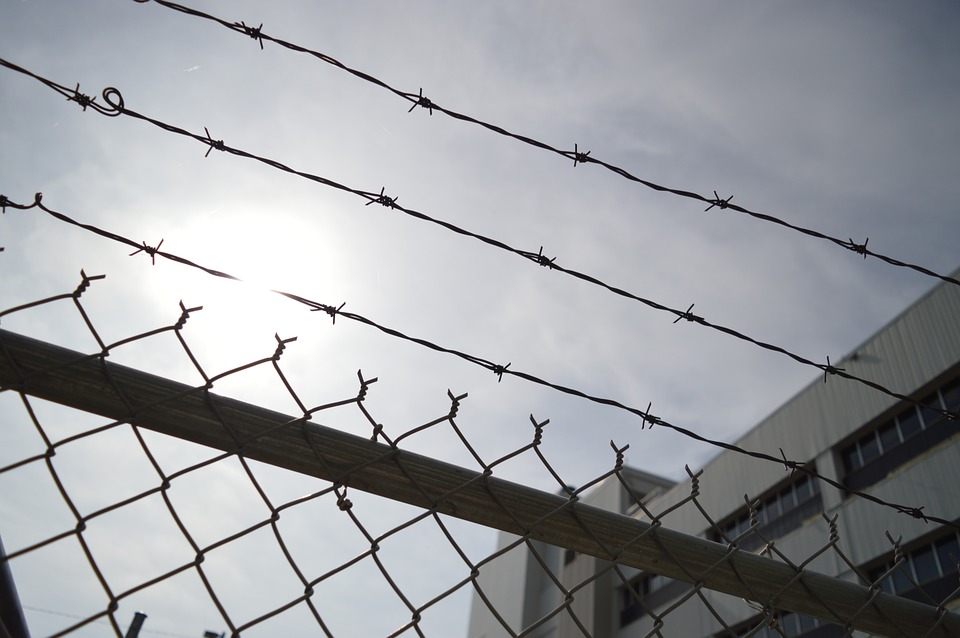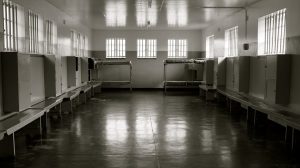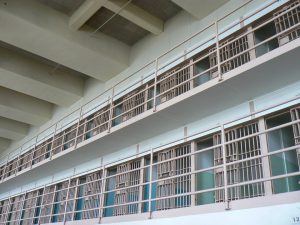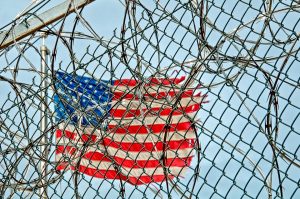This past year in particular, Americans have debated some major topics relevant to many aspects of our lives, including discrimination, access to healthcare, and economic inequalities, among others. Regarding healthcare, in particular, these discussions have included questions of economic trade-offs, individual responsibility, and others. The human rights perspective, however, has been given relatively less public attention. It is important for us as a society to consider questions of health from this point of view, as the human rights perspective allows us to frame questions in terms of what we expect the state to provide each individual within its borders, only by virtue of existing as such.
The right to health is a fundamental aspect of human rights. Given that human rights seek to ensure the well-being of the individual within the state, it is natural that this includes guaranteeing equitable access to those resources necessary for the maintenance of health. In the Universal Declaration of Human Rights, Article 25 states, “Everyone has the right to a standard of living adequate for the health and well-being of himself and his family, including food, clothing, housing, and medical care and necessary social services.” While it is clear that this statement refers to both health care as well as other underlying determinants of health, it is not always clear where the boundaries of the right to health lie. One way to interpret the reach of the right to health, however, is through its interactions with other rights, especially the right to liberty. In cases of the deprivation of the right to liberty by the state, particularly imprisonment, the state is still obliged to maintain other rights, including the right to health. Specifically in the U.S., the rise of mass incarceration in the past 40 years offers an opportunity to understand the nature of the right to health both within the prison setting and as related to communities outside of the prison. To this extent, I argue that the development of mass incarceration is a failure of the US to fulfill the right to health due to impaired access to health resources for marginalized communities.
PHOTO CREDIT: Ludi/ Pixabay
The right to health has been further defined in human rights literature. Recognized in the Article 12 of the International Convention on Economic, Social, and Cultural Rights as “the right of everyone to the enjoyment of the highest attainable standard of physical and mental health,” this right is recognized to include both proper access to health care as well as to those underlying determinants that influence health, including, at the basic level, clean water and infrastructure, and at a higher level, access to housing and education. In General Comment 14 from the United Nations Human Rights Committee, four key metrics of measurement are defined for the right to health. These are availability, where functioning state health resources must be present in sufficient quantity, accessibility, where health resources must be physically, economically, and informationally accessible to all individuals without discrimination, acceptability, where health facilities and resources must act ethically and in a culturally sound manner, and quality, where resources must be scientifically and medically appropriate and of good quality. Although the right to health is generally conceived of as positive because it requires state action to be fulfilled, in that health systems must be set up for the dissemination of resources, it also has negative components, such as that state-sanctioned health resources cannot be applied in a discriminatory manner and that information about health resources cannot be restricted. While the right to health is different from solely negative civil and political rights, these limitations do have the same standing with regards to failure of the state to fulfill the right to health and represent a fixed limitation on state action.
Under a human rights framework, the state has a special responsibility to provide for the healthcare of the incarcerated. From the perspective of human rights, imprisonment is a deprivation of liberty by the state to the citizen. This results in the prisoner being under the constant control by the state. Under this form of discipline, since the citizen is in a state of limited rights, the state has an even more pressing responsibility to ensure that all other human rights of the citizen are maintained. The United Nations International Covenant on Civil and Political Rights expresses a similar sentiment, where Article Eleven states, “All persons deprived of their liberty shall be treated with humanity and with respect for the inherent dignity of the human person.”
This includes the right to health, both with regards to health care access and underlying determinants of health, since prison inmates particularly rely on authorities to provide for them.
Although the prisoner’s right to health care is recognized by the U.S. through the Eighth Amendment, prisons are often unable to provide for the health of prisoners. Exposure to the prison system is itself often treated as a predictor of health problems. Regarding infectious diseases, HIV and AIDS is two to seven times more prevalent among the incarcerated than the general population, with fifteen percent of people infected with HIV in the US having been exposed to the penal system. Additionally, hepatitis C occurs at rates eight to twenty one times higher among the incarcerated than the general population and the syphilis rate is 1000 times higher among women incarcerated in New York City than the general population. Similarly, regarding noncommunicable diseases, 39-43 percent of prisoners have at least one chronic condition. Given the sharp trend of older adults being incarcerated, this percentage is further likely to increase over time. Rates of hypertension, asthma, arthritis, and cancer are all higher among correctional populations compared to the general population. The prison system also contributes to many mental health problems, with one-third of all deaths in the prison system resulting from suicide. Furthermore, because many treatments in prison still have copays, many financially burdened prisoners choose not to get adequate treatment.
Cited reasons for health problems among prisoners include stress, overcrowding, solitary confinement, sexual victimization, and particularly, the quality of care. In correctional facilities, the health care standards are often lower than community health standards. For example, among inmates with a persistent medical condition, 13.9 percent of federal inmates, 20.1 percent of state inmates, and 68.4 percent of local jail inmates had received no medical examination since incarceration. Only 17 percent of correctional facilities have services accredited by the National Commission on Correctional Health Care, which has set standards for correctional care. Additionally, there is very little coordination between mainstream health providers and correctional health systems. Of those inmates who entered prison or jail taking some form of prescription medicine, 26.3 percent of federal inmates, 28.9 percent of state inmates, and 41.8 percent of local inmates stopped taking the medicine after incarceration. This lack of continuity in care contributes clinical error and discontinuation of medicines, leading to higher risk of illness and injury in the correctional facility.
Since the 1970s, the American penal system has greatly expanded. By 2004, there were six times as many inmates and felons than in the 1970s, totaling to over 16 million people. This growth has been the result of the rise of imprisonment as a social intervention for non-violent crimes. Significant cause has also been attributed to more punitive policies for drug use, including mandatory minimums for drug crimes, reduced funding for community mental health resources, with many offenders being in jail for reasons related to mental health, and an especially high recidivism rate of over 70 percent as of 2014. This expansion has also included the privatization of prisons. Between 1968 and 2000, 68 private adult prison facilities were opened. These prison facilities, supported by reactionary new right politics after the civil rights movement, along with discriminatory incarceration, contributed to a racialized form of mass incarceration. In 2008, although Latinos and African Americans only made up about a quarter of the US population, they made up 58% of the prison population. Similarly, at that point, over one in six black men were in prison and one in three African American men could expect to spend some time in prison.
The impact of mass incarceration on minority communities is felt even further as members of minority groups further do not receive the same treatment within the system at nearly every stage. Georgetown law professor David Cole, in his book No Equal Justice, writes,
These double standards are not, of course, explicit; on the face of it, the criminal law is color-blind and class-blind. But in a sense, this only makes the problem worse. The rhetoric of the criminal justice system sends the message that our society carefully protects everyone’s constitutional rights, but in practice the rules assure that law enforcement prerogatives will generally prevail over the rights of minorities and the poor. By affording criminal suspects substantial constitutional rights in theory, the Supreme Court validates the results of the criminal justice system as fair. That formal fairness obscures the systemic concerns that ought to be raised by the fact that the prison population is overwhelmingly poor and disproportionately black.
Although criminal law is generally superficially color-blind, its practical application allows biases to pass through unchecked. From the beginning, members of white communities benefit from implicit racial biases that influence policing and the arrest of nonwhite individuals by police officers. This is clearly shown with regards to drug-related arrests—although white students were more likely to have abused an illegal substance than black students, black youth were arrested for drug-related crimes at more than double the rate. Additionally, racial disparities in trials make it more likely for black and Latino defendants to be convicted due to need for public defense, and less likely for their cases to more actively pursued by prosecutors due to implicit racial biases and an increased number of cases. Sentencing times for colored populations are significantly higher than for white people, exemplified by black prisoners serving usually the same amount of time for nonviolent crimes that white prisoners serve for violent crimes.
Related Article: “MENTAL INCARCERATION, THE SILENT OPPRESSOR”
Although mass incarceration violates multiple human rights through its disproportionate effect on minority communities, it particularly affects the right to health. Besides being an underlying determinant of health itself, incarceration also exacerbates many other underlying socioeconomic problems that contribute to health disparities. Mass incarceration particularly cripples family structures and economically hampers Latino and black families. The primary economic effects of incarceration stem from the loss of an additional income in the family, but there are also direct burdens placed on families as a result of incarceration, including the opportunity cost of traveling to visit imprisoned relatives and money lost to commissary accounts for incarcerated family members. This financial strain also contributes to homelessness as single-parent families struggle to pay rents. Even after those imprisoned are freed and can return to their families, the stigma associated with being a felon very strongly restricts the kinds of jobs that one can perform after being in prison, further limiting economic security. These secondary effects of incarceration diminish educational opportunities for youth, trap them in poverty, and further increase the likelihood of their exposure to the prison system. Each of these systemic socioeconomic factors are associated with chronic health problems and prevent affected individuals from taking care of their own well-being, and that minority populations have historically been underinsured has prevented resulting health conditions from being properly treated. These social contributions to health have contributed to relatively higher rates of conditions like diabetes, cancer, and heart disease.
In order to better understand the relationship between mass incarceration and the systemic failure to fulfill the right to health for those in communities of color, it is helpful to consider the social philosopher Michel Foucault’s idea of delinquency. Describing the origin of delinquency in his seminal work on the origin of the modern penal system, Discipline and Punish, Foucault writes,
The prison cannot fail to produce delinquents. It does so by the very type of existence that it imposes on its inmates: whether they are isolated in cells or whether they are given useless work, for which they will find no employment, it is, in any case, not ‘to think of man in society; it is to create an unnatural, useless, and dangerous existence’ … The prison also produces delinquents by imposing violent constraints by imposing violent constraints on its inmates; it is supposed to apply the law, and to teach respect for it; but all its functioning operates in the form of an abuse of power. … The condition to which the free inmates are subjected necessarily condemn them to recidivism.
Here, Foucault argues that rather than correcting offenses committed by individuals, the penal system rather produces delinquents through its disciplinary power who cannot function outside of the prison system and are tied to it. Although Foucault’s work focused on the historical development of the French penal system, the American system can also be said to produce delinquents, reflected by the aforementioned recidivism rates of over 70%. By disproportionately arresting people of color, the American penal system has, in fact, begun treating them as delinquents in the Foucaultian sense. The associations of Foucaultian delinquency, over time, then become associated to particular racial groups due to the disproportionate focus of the penal system on nonwhite groups, further perpetuating the exercise of political discipline upon those groups. In the context of health, this signifies an increased impact of poor health services in prisons upon members of these communities, because members of these groups spend more time in prison than members of white communities, and thus are comparatively more affected in their long term health. Furthermore, the systematized association of delinquency with minority communities has socially and economically stymied their growth through secondary effects of imprisonment to the community and has prevented them from having access to necessary health resources. These downstream effects have contributed to the disparity in attainable health standards between racial groups, and thus constitute a failure of the US to fulfill the right to health for marginalized nonwhite groups.
PHOTO CREDIT: Barbara Rosner/ Pixabay
The treatment of the non-white prisoner as a delinquent by the American penal system most obviously violates the right to health occur under the areas of availability and acceptability. Although the US has recognized a constitutional right to health for prisoners, correctional facilities simply do not provide necessary health resources to inmates. Furthermore, the systematic failure to work with community health providers and to provide medical examinations or medicines in prisons at all levels of government for many inmates suggests that the availability condition of the right to health is not being met. With regards to accessibility, a key provision is that resources must be available in a non-discriminatory manner. By charging copays for treatments in many cases, economically burdened inmates and their families are less likely to seek treatments, more strongly affecting minority communities. More generally, but as importantly, by disproportionately exposing members of nonwhite groups to the penal system, where health resources are not available and undue social and economic burdens are placed on the remainder of the community, there is a even greater limitation on the standard of health attainable by these groups.
Some progress has been made in addressing the issue of health disparities related to incarceration through the passage of the Affordable Care Act in 2010. By expanding Medicaid to those at or below 138 percent of the federally defined poverty level, this significantly eases the burden on the families of those imprisoned and allows them to take a more active role in maintaining their own health. Additionally, since insurers are now required to cover mental health issues and substance abuse disorder services, it is easier for people who would have otherwise come into contact with the penal system due to unmet health needs to seek treatment instead. Furthermore, by creating incentives for doctors and other health professionals to work in underserved areas, it is likely that communities most impacted by incarceration and its secondary effects would be able to have access to health resources that previously were not available. Its emphasis on community health workers further allows for resources to be disseminated in a culturally sensitive manner that is tailored to the needs of individuals in these historically underrepresented communities.
Though the Affordable Care Act is a step in the right direction, there nevertheless is still much progress to be made in order for the US to fulfill its right to health in the context of mass incarceration. The fundamental solution to addressing these issues is for the American penal system to stop treating its non-white inmates as delinquents. Once the penal system stops assuming that a prisoner’s identity solely revolves around life in prison, it can begin treating them as human beings who are being punished for a particular offense. This can only occur by ensuring that prisoners are treated in such a manner that is consistent with their own rights. For example, in jails, medical treatment needs to be brought up to an acceptable standard. Since so few correctional facilities are actually up to par with defined standards, regulation of correctional facilities should be more stringent such that facilities offer the services they are supposed to. Additionally, even with the Affordable Care Act, Medicaid is still not available during the period of incarceration. This would not be a problem if healthcare was provided for within the prison system, but as it is often not free, inmates are deterred from seeking medical attention. Although the Medicaid expansion has significantly helped many families of those incarcerated who otherwise would not have been able to get any healthcare, there are still many families that are not covered by Medicaid and face a financial burden in paying for private insurance. Such issues can never be addressed while the political influence of private prisons supports discriminatory policies, and can only be resolved by a public healthcare system, but until then, the Affordable Care Act remains a major step forward.
Through discriminatory and often unavailable access to medical care, the American penal system shows the failure of the US to fulfill the right to health toward minority communities. Although mass incarceration violates multiple human rights by disproportionately incarcerating people of color, it offers a useful lens to understand the human right to health. As a less well-defined right, it is particularly illuminating to examine its application when the state has actively limited the rights of the individual. As the US continues moving toward a public healthcare system, it must make sure to pay special attention to the public health effects of mass incarceration, and ensure that those who are incarcerated can still maintain their health.
Recommended reading: “MENTAL ILLNESS AND INCARCERATION SHOULDN’T MIX”












